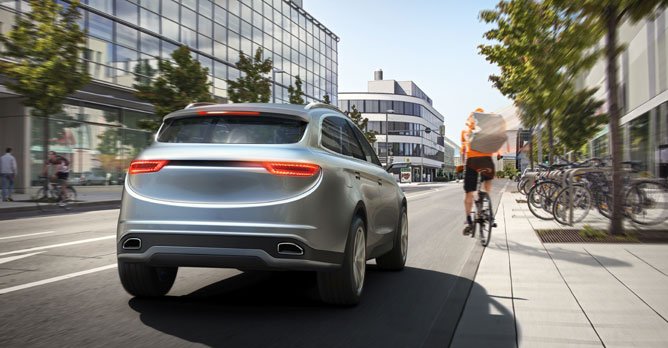Bosch completes sensor portfolio for automated driving
05 Jan 2020|999 views
Bosch is making long-range Light Detection and Ranging (LIDAR) sensors production ready, developing the first LIDAR system that is suitable for automotive use.

As such, there is a need for all three systems including radar, camera, and LIDAR, with the three technologies complementing each other perfectly and delivering reliable information in every driving situation.
The LIDAR system works by emitting laser pulses and capturing the laser light that is scattered back. It then calculates distances based on the measured time it takes for the light to bounce back. LIDAR offers a very high resolution with a long range and a wide field of vision, and thus can reliably detect even non-metallic objects at a great distance.
This means there is plenty of time to initiate driving manoeuvers such as braking or swerving. Because Bosch can draw on its existing sensor expertise and systems know-how in the fields of radar and camera technology when developing the LIDAR, the company can ensure that all three sensor technologies dovetail with each other.
The new Bosch sensor will cover both long and close ranges on highways and in the city. By exploiting economies of scale, Bosch hopes to reduce the price for the sophisticated technology and render it suitable for the mass market.
Bosch is making long-range Light Detection and Ranging (LIDAR) sensors production ready, developing the first LIDAR system that is suitable for automotive use.

Borsch explains that the laser-based distance measurement technology is indispensable for driving functions at Society of Automotive Engineers autonomous driving levels three to five, since radar systems alone can struggle to detect the narrow silhouette and plastic fairings of bicycles and motorcycles, while cameras can also be dazzled by harsh light.
As such, there is a need for all three systems including radar, camera, and LIDAR, with the three technologies complementing each other perfectly and delivering reliable information in every driving situation.
The LIDAR system works by emitting laser pulses and capturing the laser light that is scattered back. It then calculates distances based on the measured time it takes for the light to bounce back. LIDAR offers a very high resolution with a long range and a wide field of vision, and thus can reliably detect even non-metallic objects at a great distance.
This means there is plenty of time to initiate driving manoeuvers such as braking or swerving. Because Bosch can draw on its existing sensor expertise and systems know-how in the fields of radar and camera technology when developing the LIDAR, the company can ensure that all three sensor technologies dovetail with each other.
The new Bosch sensor will cover both long and close ranges on highways and in the city. By exploiting economies of scale, Bosch hopes to reduce the price for the sophisticated technology and render it suitable for the mass market.
Latest COE Prices
May 2025 | 1st BIDDING
NEXT TENDER: 21 May 2025
CAT A$103,009
CAT B$119,890
CAT C$62,590
CAT E$118,889
View Full Results Thank You For Your Subscription.


















